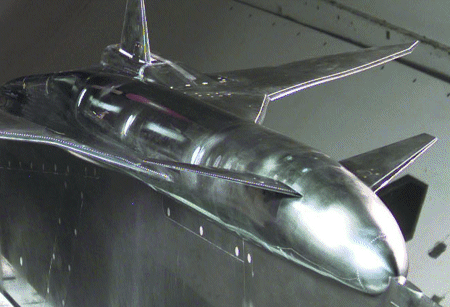GUY NORRIS / SEATTLE
Manufacturer wary of going beyond sound barrier with "supersonic" dash capability
Airlines working with Boeing on the initial configuration of the sonic cruiser high-speed airliner are asking it to design in a supersonic dash capability, despite apparent resistance from the manufacturer to step beyond the sound barrier with its new concept.
Sources among the 15-strong airline group involved in the configuration studies say: "We are asking Boeing to look at a supersonic dash capability because, seeing as it has to be certified beyond Mach 1 for upsets, why not use the capability when over water?" Boeing sonic cruiser vice president and general manager Walt Gillette says newly completed wind-tunnel tests have been completed up to speeds of Mach 1.08, but insists that the company is not considering cruise speeds in excess of M1.
"This is a sonic cruiser. We are looking at Mach 1, not any faster right now because, frankly, the technology is not here yet for a Mach 1.4, 1.6 to Mach 2 aircraft."

Individual airlines, like suppliers involved in the sonic cruiser, are reluctant to be identified because of strict security rules laid down by Boeing as part of the development effort. However, several of the group say they have indicated a preference for supersonic capability to M1.02 and M1.05 in answers to a multipage questionnaire issued by Boeing as part of the initial configuration studies.
Should Boeing concede to the airlines' wishes it now knows that, following the first round of low and high-speed wind-tunnel tests, the basic stability and control characteristics were confirmed through speeds up to M1.08.
"When we looked at the first data we just said 'wow'," says Gillette. Speaking at the Aerospace North America exhibition in Seattle, Washington, Gillette says the pitch characteristics of the canard-equipped, swept wing airliner were "steady and level". The design showed no evidence of Mach tuck, a concern of all new designs operating in the transonic speed range, and "showed no sign of buffet onset", he adds.
The tests mark the first stages of the configuration definition process which Boeing hopes to complete around November. The images of the model, which was tested in the low-speed tunnel at the University of Washington and Boeing's transonic tunnel, are the first to be released that show the actual shape of the proposed aircraft.
Source: Flight International























